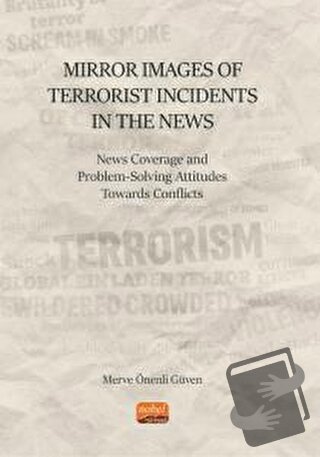
Conflict is a dynamic fluctuating phenomenon that can be managed either constructively or destructively. Violence is the ultimate form of destructive management of conflicts and also leads to the reciprocal escalation of violence between antagonistic parties. In other words, violence begets violence and creates a vicious cycle, underlining its counter-productive nature. This work studies how the phenomenon of terror is handled in the media in the process of its transformation into terrorism within the scope of conflict analysis, management, and resolution. In this context, it is investigated how the November 15-20, 2003, Istanbul bombings were covered in the Turkish print media. Because media reflect the images of the world to people in the form of news. Media cannot isolate itself from the society in which it exists. Therefore, the media have very significant role in societies through their information-giving capability, which can reach every part of society. Hence, the subject of this study is concerned with the relationship between the media and terrorism considering that the media have publicity power whether the media have a constructive or a destructive role in the representation of conflicts is inquired in this study.
| Taksit Sayısı | Taksit tutarı | Genel Toplam |
|---|---|---|
| Tek Çekim | 110,50 | 110,50 |
| 3 | 40,25 | 120,75 |
| 6 | 21,25 | 127,51 |
| 9 | 14,92 | 134,27 |
| 12 | 11,75 | 141,01 |
| Taksit Sayısı | Taksit tutarı | Genel Toplam |
|---|---|---|
| Tek Çekim | 110,50 | 110,50 |
| 3 | 40,25 | 120,75 |
| 6 | 21,25 | 127,51 |
| 9 | 14,92 | 134,27 |
| 12 | 11,75 | 141,01 |
| Taksit Sayısı | Taksit tutarı | Genel Toplam |
|---|---|---|
| Tek Çekim | 110,50 | 110,50 |
| 3 | 40,25 | 120,75 |
| 6 | 21,25 | 127,51 |
| 9 | 14,92 | 134,27 |
| 12 | 11,75 | 141,01 |
| Taksit Sayısı | Taksit tutarı | Genel Toplam |
|---|---|---|
| Tek Çekim | 110,50 | 110,50 |
| 3 | 40,25 | 120,75 |
| 6 | 21,25 | 127,51 |
| 9 | 14,92 | 134,27 |
| 12 | 11,75 | 141,01 |
| Taksit Sayısı | Taksit tutarı | Genel Toplam |
|---|---|---|
| Tek Çekim | 110,50 | 110,50 |
| 3 | 40,25 | 120,75 |
| 6 | 21,25 | 127,51 |
| 9 | 14,92 | 134,27 |
| 12 | 11,75 | 141,01 |
| Taksit Sayısı | Taksit tutarı | Genel Toplam |
|---|---|---|
| Tek Çekim | 110,50 | 110,50 |
| 3 | 40,25 | 120,75 |
| 6 | 21,25 | 127,51 |
| 9 | 14,92 | 134,27 |
| 12 | 11,75 | 141,01 |
| Taksit Sayısı | Taksit tutarı | Genel Toplam |
|---|---|---|
| Tek Çekim | 110,50 | 110,50 |
| 3 | - | - |
| 6 | - | - |
| 9 | - | - |
| 12 | - | - |
Conflict is a dynamic fluctuating phenomenon that can be managed either constructively or destructively. Violence is the ultimate form of destructive management of conflicts and also leads to the reciprocal escalation of violence between antagonistic parties. In other words, violence begets violence and creates a vicious cycle, underlining its counter-productive nature. This work studies how the phenomenon of terror is handled in the media in the process of its transformation into terrorism within the scope of conflict analysis, management, and resolution. In this context, it is investigated how the November 15-20, 2003, Istanbul bombings were covered in the Turkish print media. Because media reflect the images of the world to people in the form of news. Media cannot isolate itself from the society in which it exists. Therefore, the media have very significant role in societies through their information-giving capability, which can reach every part of society. Hence, the subject of this study is concerned with the relationship between the media and terrorism considering that the media have publicity power whether the media have a constructive or a destructive role in the representation of conflicts is inquired in this study.










